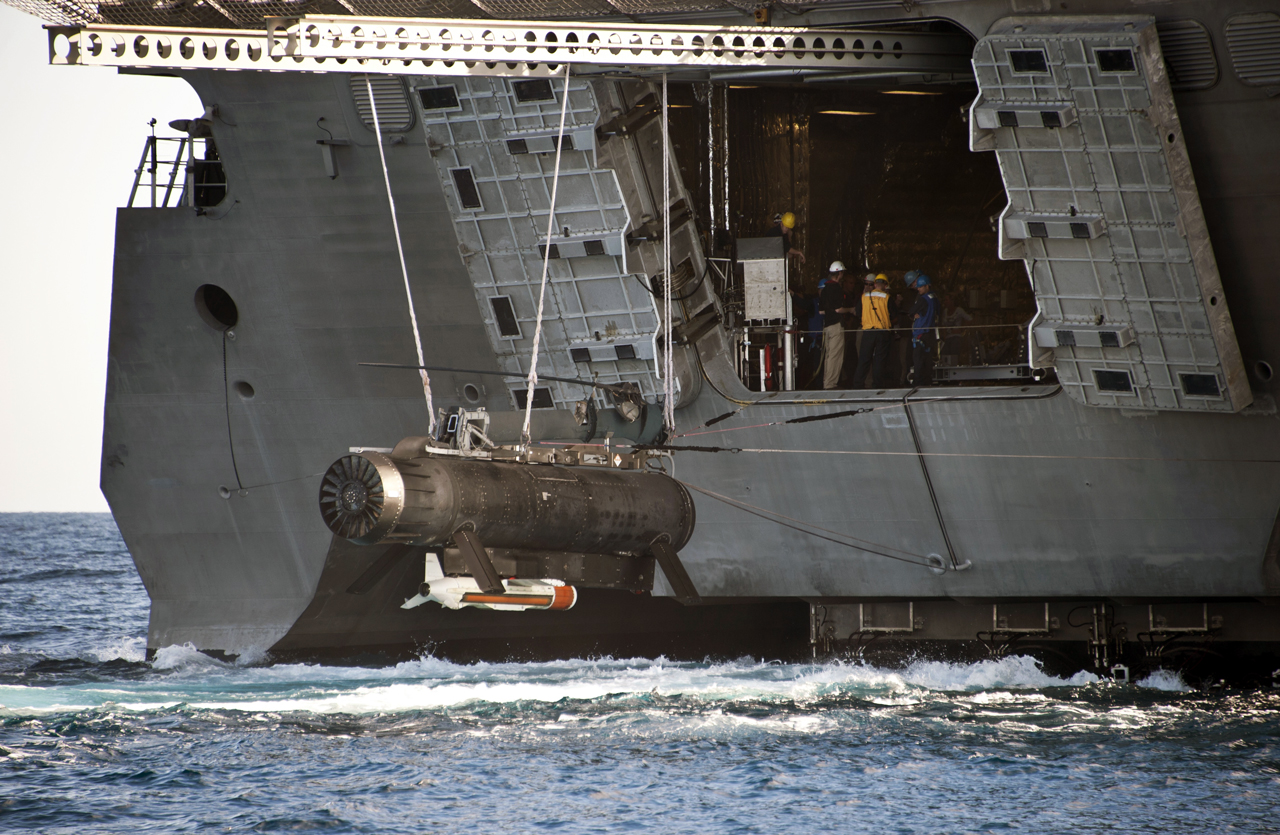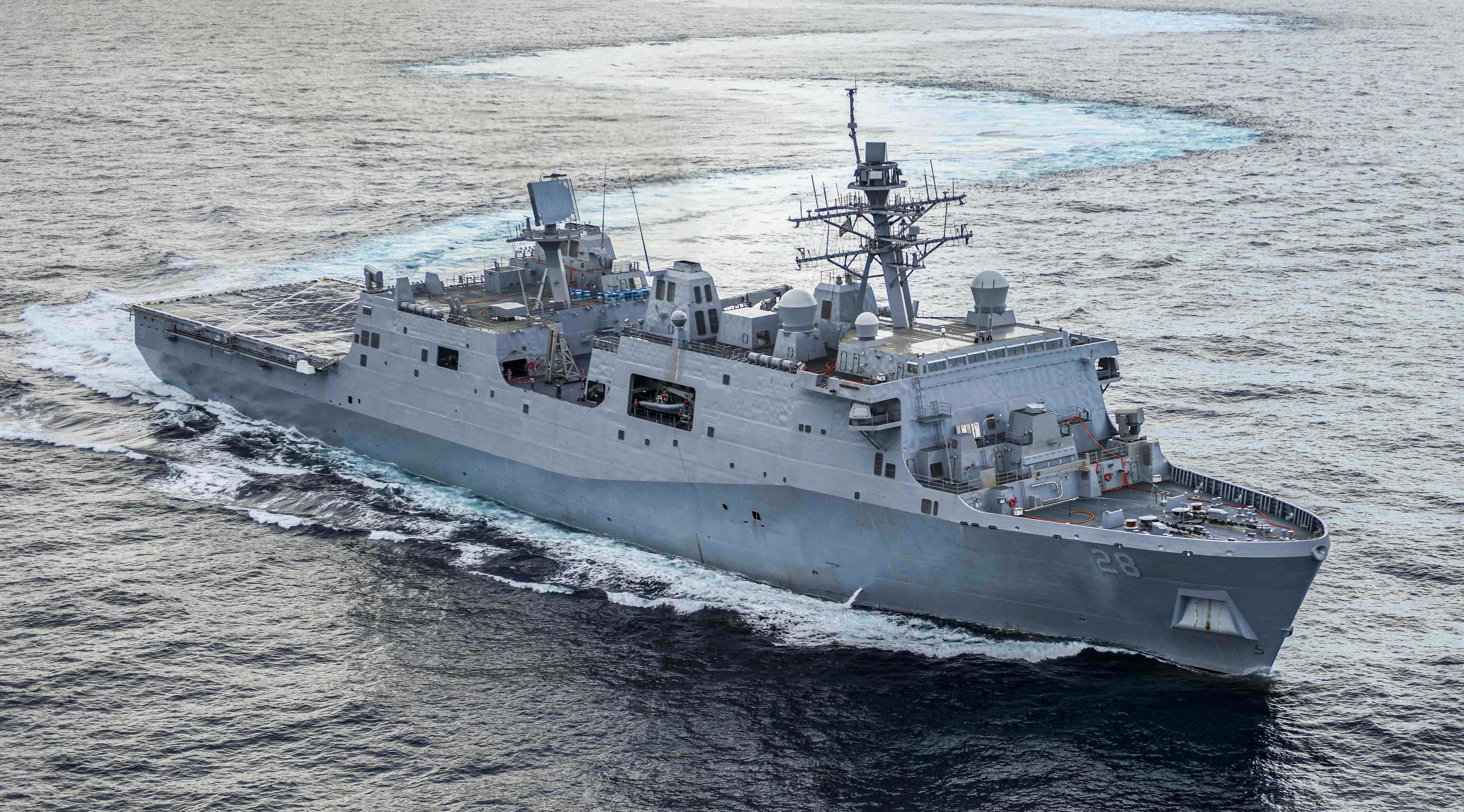
The heads of the Senate Armed Services Committee (SASC) expressed disappointment in the progress of the Mine Countermeasures (MCM) package for the Littoral Combat Ship and are recommending the Navy review other mine hunting technologies to fill looming needs in the fleet, according to a Monday letter to Defense Department acquisition chief Frank Kendall, Secretary of the Navy Ray Mabus and Chief of Naval Operations Adm. Jonathan Greenert obtained by USNI News.
At issue are recent reports on the reliability of a core component in the MCM package, the Remote Minehunting System (RMS) — comprised of the Raytheon AQS-20A towed array sonar and the Lockheed Martin remote multi-mission vehicle (RMMV).
The 7.25-ton semi-submersible RMMV — designed to deploy from the LCS and autonomously scout mines with the AQS-20A — in particular has had a history of persistent reliability problems.
SASC Chairman Sen. John McCain (R-Ariz.) and ranking member Sen. Jack Reed (D-R.I.) cite an early August memo signed by director of the Office of Test and Evaluation (DOT&E) Michael Gilmore that “assessed the current Remote Mine Hunting System and RMMV reliability as being 18.8 hours and 25.0 hours between mission failures… which is well below the Navy’s requirement of 75 hours” and that the Navy provided “no statistical evidence that the [system] is demonstrating improved reliability, and instead indicates that reliability plateaued nearly a decade ago.”
The findings of Gilmore’s Aug. 3 memo were first reported by Defense News.
Naval Sea Systems Command (NAVSEA) officials told USNI News on Wednesday the two most recent technical evaluation runs of the RMS system had “a preliminary estimate of 39 hours” before mission failure.
Two years ago, the NAVSEA officials told USNI News the RMS had achieved up to 45 hours of operation before failure.
NAVSEA declined to comment on the letter directly but provided a statement to USNI News that said, “to ensure better results for upcoming test runs, the Navy is implementing a more robust ready-for-use inspection, procuring additional spares, and providing additional training, additional technicians, better tools and updated procedures.”
The Pentagon had initially planned to conduct initial operational test and evaluation (IOT&E) for the MCM package in July ahead of an expected declaration of initial operational capability (IOC) at the end of this month. The Navy later delayed both the tests and the IOC declaration.
USNI News first reported the delays in the MCM package testing schedule in July.
Following IOC, the service was set to award a low rate initial production (LRIP) contract for additional RMMVs. The service plans to procure 24 of the MCM packages to field on LCS.
In light of the DOT&E memo, McCain and Reed urged the Navy hold “to review the alternatives and make sure we are on the correct course, rather than letting the inertia of the status quo continue the program of record on into operational testing and production.”
Specifically, the pair mentioned the service take closer looks at the Minehunting Unmanned Surface Vehicles (MHU); the AN/AQS24 sonar currently in use by the Navy’s fleet of MH-53 Sea Dragon MCM helos; the Common Unmanned Surface Vehicle (C-USV), which will be part of the MCM mission package in a later increment; and unmanned underwater vehicles like the Mark 18 Mod 1 Sword Fish and Mod 2 Kingfish.
Of all of the planned mission packages for LCS, the MCM package is by far the most urgent need for the Navy. In the next several years the service plans to decommission its 1980s-era Avenger-class mine sweepers (MCM-1) and its fleet of Sea Dragons, and the Navy has few alternatives to fill the gap when the platforms leave the service.





